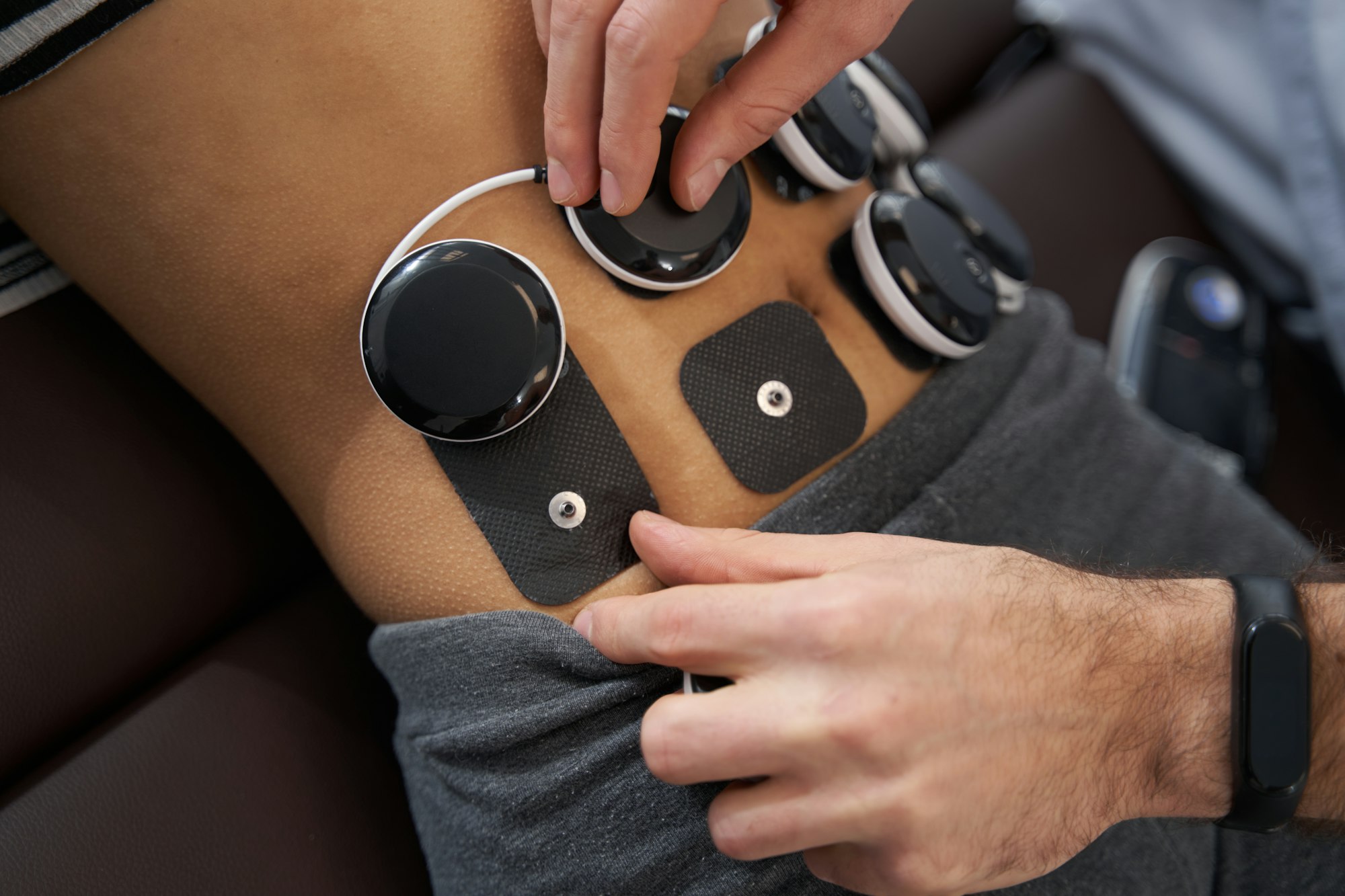Is Axonics Therapy Covered By Medicare: A Comparative Review
Medicare, plays an important role in providing access to medical treatments and therapies. One such therapy that has gained attention in recent years is Axonics Therapy, a groundbreaking approach to treating overactive bladder and fecal incontinence. A primary concern for those considering Axonics Therapy is whether Medicare covers this innovative treatment. In this article, we will delve into Medicare coverage, its benefits, and the eligibility criteria for Axonics Therapy. How is Axonics therapy covered by Medicare. Explore medicare coverage and medicare benefits. Make informed decisions about your healthcare coverage.
Medicare Coverage: An Overview
Medicare is divided into parts, each designed to provide specific coverage for various healthcare services. To understand if Medicare covers Axonics Therapy, it’s essential to consider the different parts of the program.
- Medicare Part A: This primarily covers hospital stays, skilled nursing facility care. Unfortunately, Axonics Therapy is not related to hospitalization, so Medicare Part A does not provide any coverage for this treatment.
- Medicare Part B: Responsible for covering medical services and supplies necessary for diagnosing or treating a medical condition. While Axonics Therapy is a medical procedure, the coverage for this therapy is not straightforward and is subject to specific criteria.
Axonics Therapy: A Closer Look
Axonics Therapy is a cutting-edge treatment option for individuals suffering from overactive bladder and fecal incontinence. It involves implanting a small device that delivers electrical stimulation to the sacral nerves, effectively restoring proper bladder and bowel control. Patients not responding to conservative treatments often turn to Axonics Therapy as a last resort to improve their quality of life.
Medicare Benefits for Axonics Therapy
Understanding whether Medicare covers Axonics Therapy is critical for individuals considering this treatment option. While Medicare Part B covers a wide range of medical services, it’s important to note that the coverage for Axonics Therapy is not universal. The following factors determine whether or not Medicare will cover this therapy:
- Medical Necessity Medicare requires that any treatment, including Axonics Therapy, must be medically necessary. In the case of overactive bladder and fecal incontinence, the patient’s condition must be severe and refractory to other treatments for Axonics Therapy to be considered medically necessary.
- Prior Authorization Before undergoing Axonics Therapy, patients must obtain prior authorization from Medicare. The patient’s healthcare provider should submit all necessary documentation.
- Coverage Determination Medicare contractors review the documentation and determine whether Axonics Therapy meets the criteria for coverage. If the treatment is deemed medically necessary and approved, it may be covered by Medicare Part B.
- Cost Sharing Medicare beneficiaries who receive covered Axonics Therapy may still be responsible for certain costs. This can include deductibles, copayments, and coinsurance, which vary depending on the patient’s specific Medicare plan.
Eligibility for Medicare Coverage
To be eligible for Medicare coverage of Axonics Therapy, patients must meet specific criteria:
- Enrollment in Medicare Part B Patients must be enrolled in Medicare Part B to be eligible for coverage of Axonics Therapy. Enrollment typically begins at age 65, but individuals with certain disabilities may become eligible at a younger age.
- Medical Necessity As mentioned earlier, the primary criterion for eligibility is the medical necessity of Axonics Therapy. Patients must have a severe and treatment-resistant condition that justifies the need for this therapy.
- Prior Authorization The patient’s healthcare provider plays a pivotal role in the process, as they need to obtain prior authorization from Medicare to proceed with Axonics Therapy.
- Coverage Determination The final determination of coverage is made by Medicare contractors after reviewing all submitted documentation.
- Compliance with Medicare Guidelines Patients must adhere to all Medicare guidelines and requirements, as non-compliance can affect their eligibility for coverage.
The Future of Axonics Therapy Coverage
Medicare policies and coverage criteria can evolve over time. As medical technologies advance and new treatments emerge, there is a possibility that Medicare’s coverage of Axonics Therapy may change. Patients considering this treatment should stay informed about any updates to Medicare’s policies and work closely with their healthcare providers to navigate the coverage process effectively.
Benefits and Downfalls
Benefits of Axonics Therapy:
- Effective Treatment: One of the primary benefits of Axonics Therapy is its effectiveness in treating overactive bladder and fecal incontinence, conditions that can significantly impact a person’s quality of life. This therapy has been shown to provide relief to individuals who have not responded well to other treatments.
- Improved Quality of Life: Axonics Therapy can lead to a substantial improvement in a patient’s quality of life. Regaining control over bladder and bowel function allows individuals to engage in daily activities, work, and social interactions with greater confidence and comfort.
- Long-lasting Results: The effects of Axonics Therapy are typically long-lasting, providing patients with sustained relief from their symptoms. This long-term benefit can lead to reduced healthcare costs and improved overall well-being.
- Personalized Treatment: The Axonics device allows for the adjustment of stimulation settings, providing a personalized approach to treatment. Healthcare providers can fine-tune the therapy to suit each patient’s individual needs, increasing the chances of success.
Downfalls of Axonics Therapy:
- Cost: One significant downside of Axonics Therapy is the potential cost. While Medicare and some private insurance plans can cover it, there may still be out-of-pocket costs, such as deductibles, copayments, and coinsurance. The cost can be a barrier to access for those without adequate insurance coverage.
- Eligibility Criteria: Not all individuals with overactive bladder or fecal incontinence meet the eligibility criteria for Axonics Therapy. The requirement for prior authorization and a determination of medical necessity may limit access for some patients, potentially leaving them without an effective treatment option.
- Invasive Procedure: Although it is minimally invasive compared to some surgical procedures, Axonics Therapy still involves the implantation of a device, which carries some risks. Patients may experience discomfort at the implantation site, with a potential risk of infection or device malfunction.
- Individual Response: The effectiveness of Axonics Therapy can vary from person to person. While many individuals experience significant improvement, some may respond less favorably to the treatment. The therapy may not provide a complete cure for everyone.
- Medicare Policy Changes: Medicare policies can change over time, potentially impacting coverage for Axonics Therapy. Patients must stay informed about any policy updates that may affect their access to this treatment. Changes in coverage policies can significantly impact the availability and affordability of Axonics Therapy.
Pros and Cons of Axonics Therapy
Pros:
- Effective Treatment: For many patients suffering from overactive bladder and fecal incontinence, Axonics Therapy has proven to be an effective treatment option when other methods have failed. It offers the potential for improved bladder and bowel control, leading to a better quality of life.
- Long-lasting Results: The effects of Axonics Therapy are typically long-lasting, providing patients with sustained relief from their symptoms.
- Adjustable Stimulation: The Axonics device allows for the adjustment of stimulation settings, providing a personalized approach to treatment. Healthcare providers can fine-tune the therapy to suit the individual needs of each patient.
- Improved Quality of Life: For many individuals, regaining control over bladder and bowel function significantly enhances their quality of life and social interactions more comfortably.
Cons:
- Cost: While Medicare and some private insurance plans can cover Axonics Therapy, there may still be out-of-pocket costs for deductibles, copayments, and coinsurance. For those without adequate insurance coverage, the cost can be a barrier to access.
- Eligibility Criteria: Not all individuals with overactive bladder or fecal incontinence meet the eligibility criteria for Axonics Therapy. The requirement for prior authorization and a determination of medical necessity may limit access for some patients.
- Invasive Procedure: Although it is minimally invasive compared to some surgical procedures, Axonics Therapy still involves the implantation of a device, which carries some risks, such as infection or discomfort at the implantation site.
- Individual Response: The effectiveness of Axonics Therapy can vary from person to person. Some individuals may experience significant improvement, while others may have a less favorable response to the treatment.
- Medicare Policy Changes: Medicare policies can change over time, potentially impacting coverage for Axonics Therapy. Patients need to stay informed about any policy updates that may affect their access to this treatment.
Conclusion
Axonics Therapy offers new hope for individuals suffering from overactive bladder and fecal incontinence. While Medicare Part B may provide coverage for this treatment under certain conditions, it is crucial to understand the specific eligibility requirements and the importance of establishing medical necessity. By staying informed about Medicare’s policies and working closely with healthcare providers, patients can make informed decisions about their treatment options and access the benefits of Axonics Therapy when appropriate. It is important to keep in mind that Medicare policies can change, so continuous monitoring of coverage criteria is essential for individuals seeking this innovative therapy.
FAQs (Frequently Asked Questions)
1. Is Axonics Therapy a permanent solution for overactive bladder and fecal incontinence?
- Axonics Therapy is designed to provide long-lasting relief, but its effectiveness can vary among individuals. Some patients may experience sustained benefits, while others may require periodic adjustments or additional treatments.
2. Can Axonics Therapy be combined with other treatments for overactive bladder and fecal incontinence?
- In some cases, Axonics Therapy may be used in conjunction with other treatments, such as medications or behavioral therapies. Your healthcare provider can recommend the most suitable combination of treatments.
3. Are there any lifestyle changes or precautions that should be followed alongside Axonics Therapy?
- Patients may be advised to make certain lifestyle adjustments, such as managing fluid intake or engaging in pelvic floor exercises. Your healthcare provider will provide guidance on these recommendations as part of your overall treatment plan.
4. Are there any age restrictions for Medicare coverage of Axonics Therapy?
- Medicare is primarily available to individuals aged 65 and older. However, some younger individuals with certain disabilities may also be eligible for Medicare. The key factor for eligibility is meeting the medical necessity criteria rather than age.
5. Can Medicare cover Axonics Therapy if it’s deemed medically necessary for a pediatric patient?
- Medicare typically covers individuals aged 65 and older. Coverage for pediatric patients would generally fall under Medicaid or private insurance. However, the specifics may vary by state, so it’s essential to consult with healthcare providers and insurance experts.
6. Can I undergo Axonics Therapy if I have other medical conditions or use other medical devices?
- The eligibility for Axonics Therapy is determined on a case-by-case basis, considering various factors, including existing medical conditions and other devices. It is essential to discuss your specific situation with your healthcare provider, which provide guidance based on your individual health status.
7. Are there any lifestyle restrictions following Axonics Therapy?
- Generally, there are no strict lifestyle restrictions after Axonics Therapy. Patients are often encouraged to resume normal activities and maintain a healthy lifestyle. However, individual recommendations may vary, so it’s crucial to follow the guidance.
8. How can I find a healthcare provider or specialist who offers Axonics Therapy and accepts Medicare?
- You can use the Medicare.gov website or contact your local Medicare office to find healthcare providers and specialists who offer Axonics Therapy and accept Medicare. Additionally, you can consult with your primary care physician for referrals.
9. Can I switch from one Medicare plan to another to potentially gain better coverage for Axonics Therapy?
- Medicare beneficiaries can switch between Medicare plans during certain enrollment periods. It’s essential to review the details of each plan to determine which one provides the most favorable coverage for Axonics Therapy and other healthcare needs.
10. What steps should I take if my Medicare claim for Axonics Therapy is denied?
- You can appeal the decision if your Medicare claim for Axonics Therapy is denied. The denial letter will provide information on how to initiate the appeal process, which typically involves providing additional documentation or requesting a review by an independent organization.
11. Are there alternative treatments for overactive bladder and fecal incontinence covered by Medicare?
- Medicare may cover alternative treatments for these conditions, such as medications or behavioral therapies. The specific coverage will depend on your Medicare plan and the medical necessity of the treatment. It’s advisable to discuss available options with your healthcare provider.
Visit Newmedicare to get Medicare quotes, plan comparisons, consultation, plan availability, and more!






